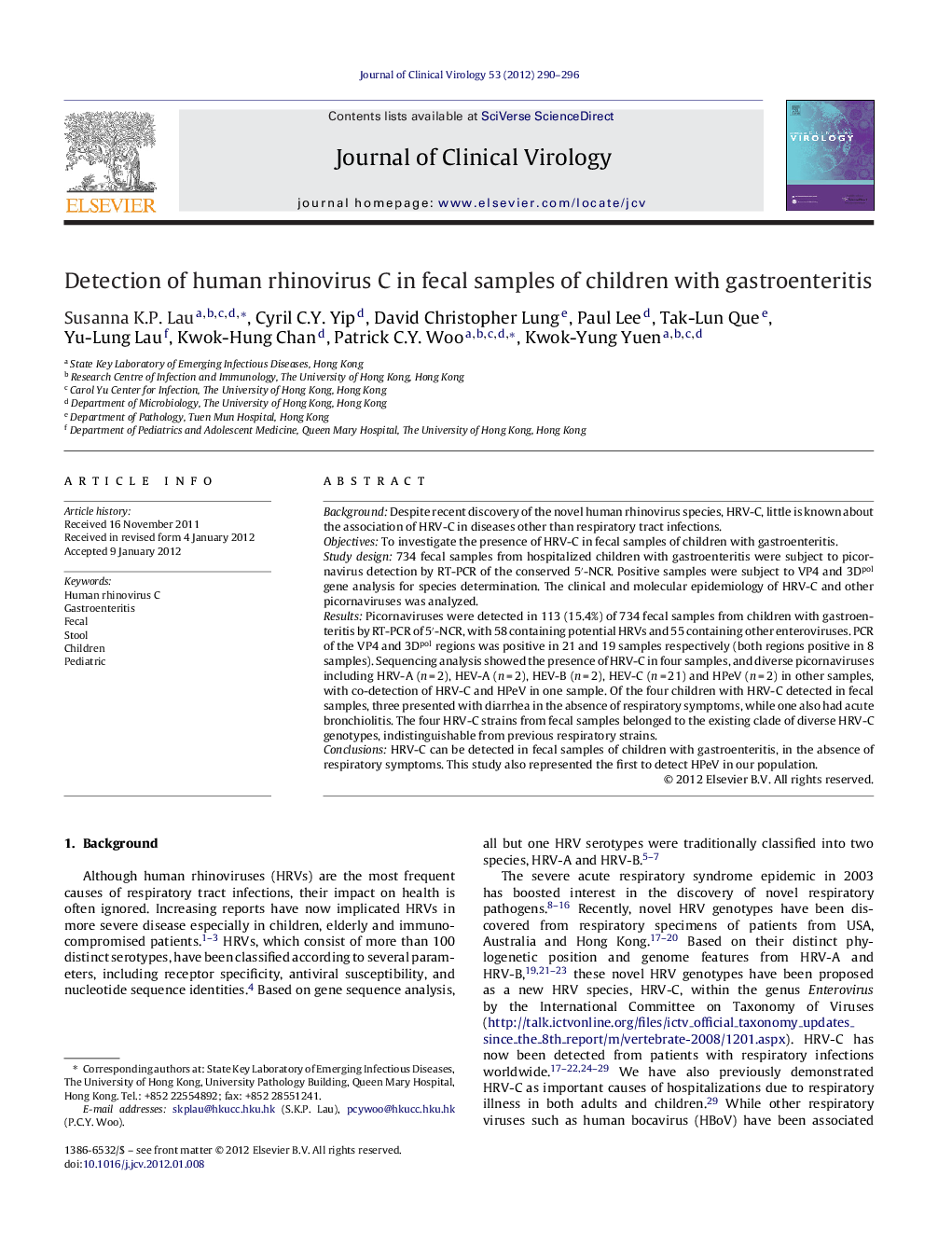| Article ID | Journal | Published Year | Pages | File Type |
|---|---|---|---|---|
| 3368996 | Journal of Clinical Virology | 2012 | 7 Pages |
BackgroundDespite recent discovery of the novel human rhinovirus species, HRV-C, little is known about the association of HRV-C in diseases other than respiratory tract infections.ObjectivesTo investigate the presence of HRV-C in fecal samples of children with gastroenteritis.Study design734 fecal samples from hospitalized children with gastroenteritis were subject to picornavirus detection by RT-PCR of the conserved 5′-NCR. Positive samples were subject to VP4 and 3Dpol gene analysis for species determination. The clinical and molecular epidemiology of HRV-C and other picornaviruses was analyzed.ResultsPicornaviruses were detected in 113 (15.4%) of 734 fecal samples from children with gastroenteritis by RT-PCR of 5′-NCR, with 58 containing potential HRVs and 55 containing other enteroviruses. PCR of the VP4 and 3Dpol regions was positive in 21 and 19 samples respectively (both regions positive in 8 samples). Sequencing analysis showed the presence of HRV-C in four samples, and diverse picornaviruses including HRV-A (n = 2), HEV-A (n = 2), HEV-B (n = 2), HEV-C (n = 21) and HPeV (n = 2) in other samples, with co-detection of HRV-C and HPeV in one sample. Of the four children with HRV-C detected in fecal samples, three presented with diarrhea in the absence of respiratory symptoms, while one also had acute bronchiolitis. The four HRV-C strains from fecal samples belonged to the existing clade of diverse HRV-C genotypes, indistinguishable from previous respiratory strains.ConclusionsHRV-C can be detected in fecal samples of children with gastroenteritis, in the absence of respiratory symptoms. This study also represented the first to detect HPeV in our population.
